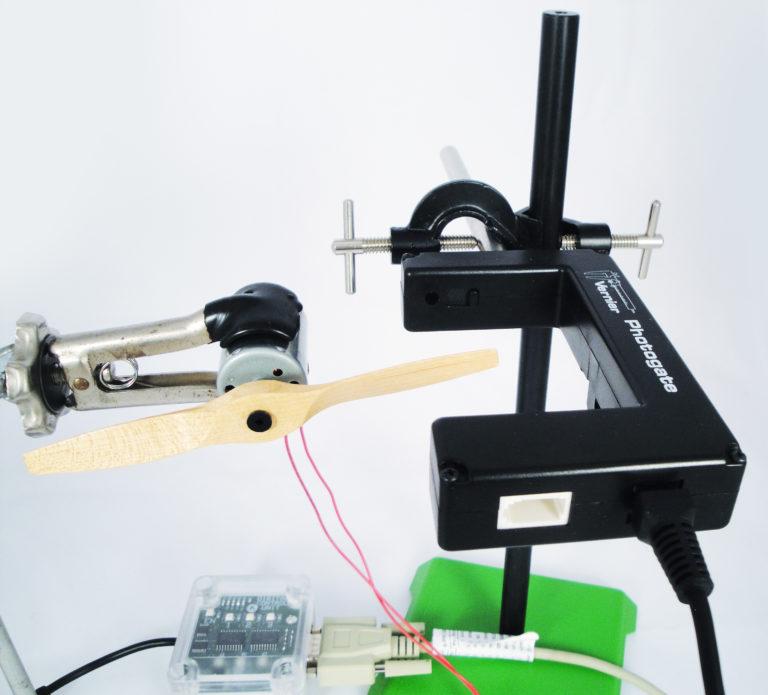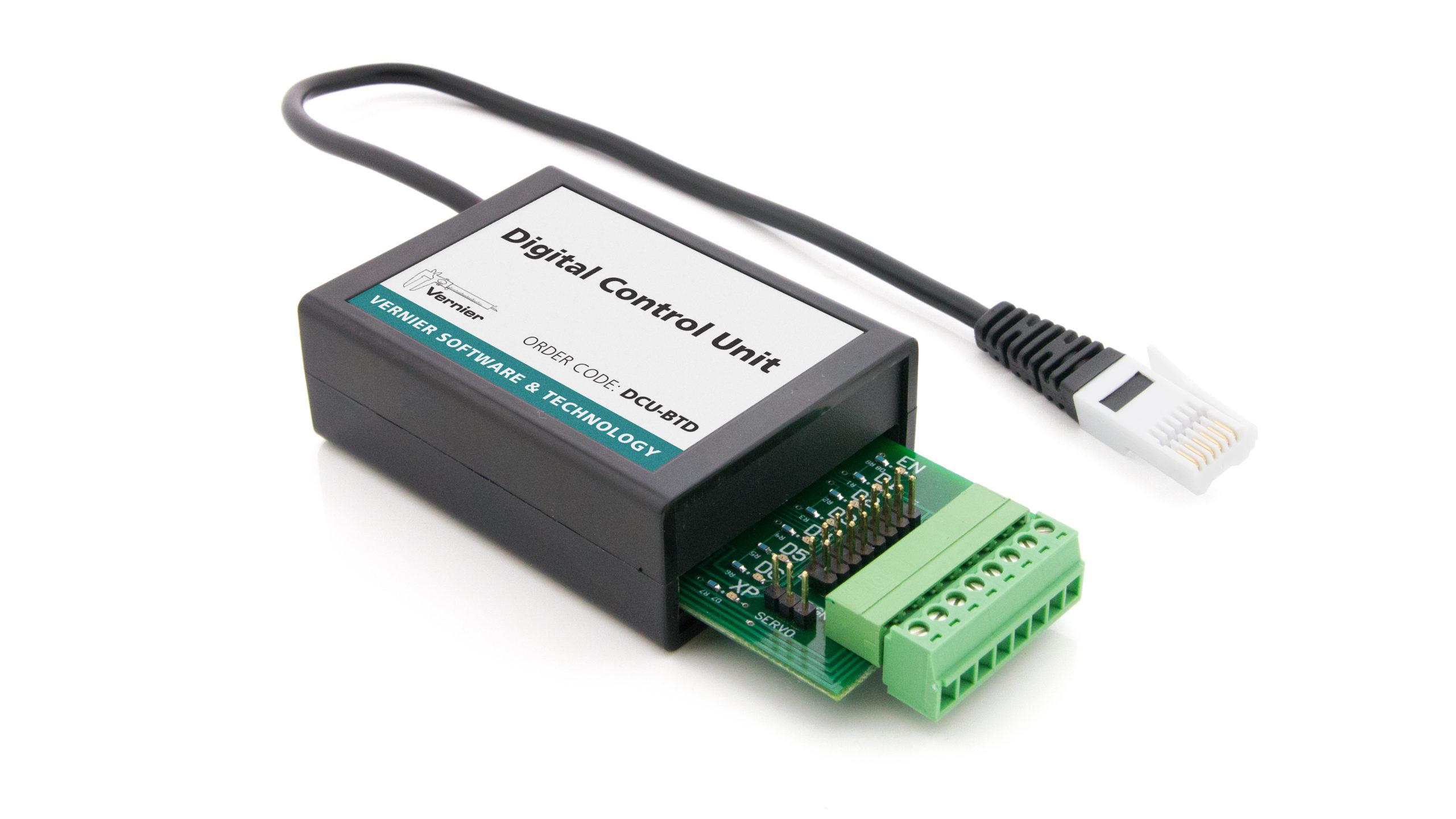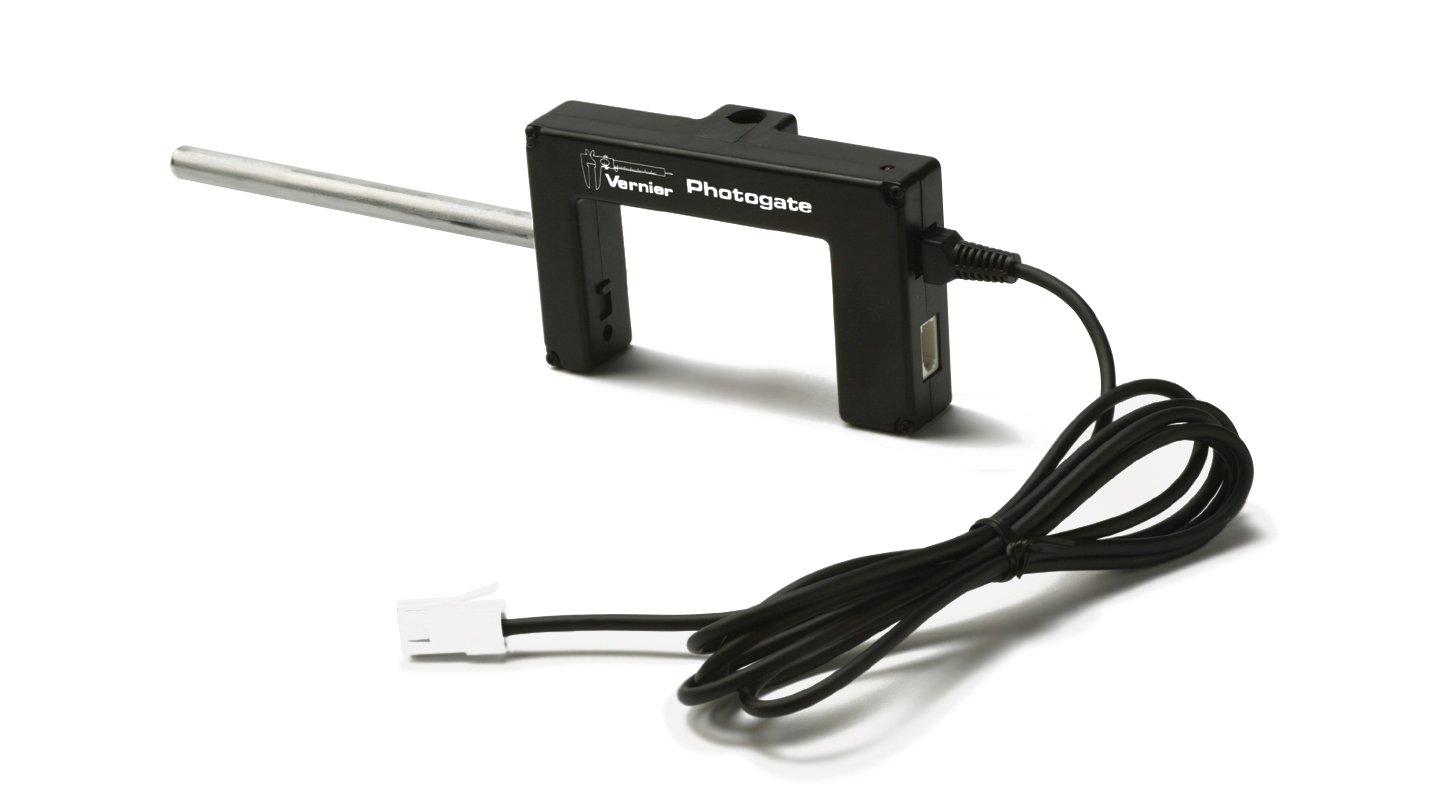DC Motor Control
Experiment #5 from Engineering Projects with NI LabVIEW and Vernier
- Subject
- Engineering

Introduction
Small DC motors find many uses in electronic devices and are a favorite component of engineers and hobbyists. The input voltage to a motor determines how fast it rotates, but in many projects it is important to be able to measure the speed of the motor. A tachometer is an instrument that measures the rotational speed of a motor’s shaft in revolutions per minute (rpm). Tachometers are used on cars and aircraft to show the rate of rotation of the engine’s crankshaft, and can be used to assist the driver in selecting the appropriate throttle and gear settings for safe driving conditions since exceeding the maximum safe operating speed on an engine can lead to overheating and engine failure. Some tachometers use lasers to measure rotational speed; others use a small generator to produce a voltage that is roughly proportional to the rotational speed. This Project uses a Photogate to determine the speed of the motor.
Objectives
In this Project, you will build a tachometer to measure the rotational speed of a DC motor. First you must build a circuit to power your motor from the Vernier Digital Control Unit (DCU). Your circuit should contain a potentiometer to allow the user to control the voltage to the motor. Then you will write a LabVIEW program to determine the rotational speed in revolutions per minute (rpm) by measuring the period of a propeller mounted to the motor shaft passing through a Vernier Photogate.
Sensors and Equipment
This experiment features the following sensors and equipment. Additional equipment may be required.
Ready to Experiment?
Ask an Expert
Get answers to your questions about how to teach this experiment with our support team.
- Call toll-free: 888-837-6437
- Chat with Us
- Email support@vernier.com
Purchase the Lab Book
This experiment is #5 of Engineering Projects with NI LabVIEW and Vernier. The experiment in the book includes student instructions as well as instructor information for set up, helpful hints, and sample graphs and data.



